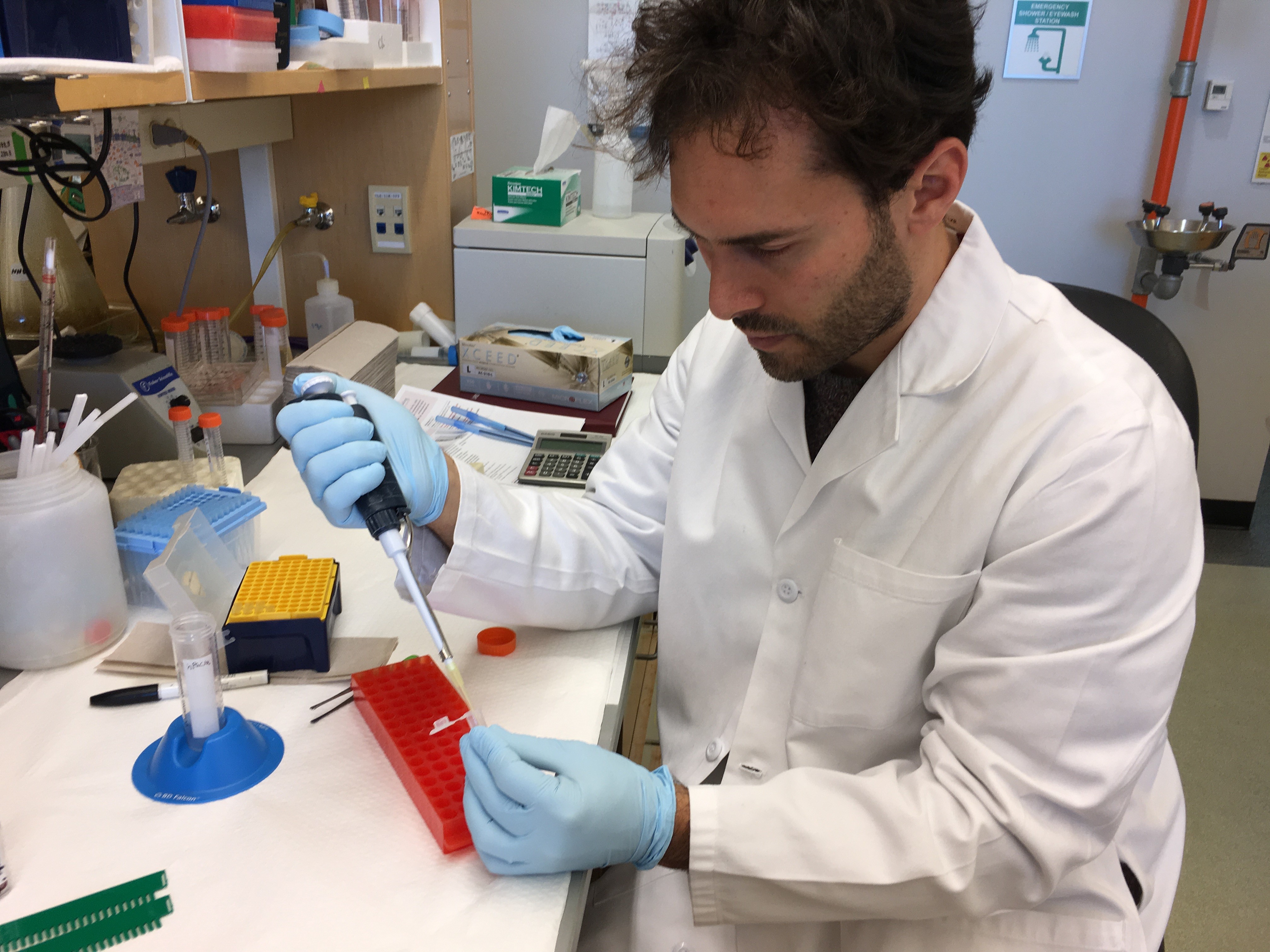
Eduardo Balsa Martinez, a postdoctoral fellow in the division of cancer biology at the Dana-Farber Cancer Institute in Boston, was awarded an MDA development grant totaling $180,000 over three years to identify therapeutic targets in mitochondrial diseases such as mitochondrial myopathy.
Please describe your current research on mitochondrial diseases.
The mitochondria are small, yet essential, organelles that populate every cell of the body and are often referred as the powerhouse of the cell, since they generate most of the energy in an organism. Therefore, is not surprising that when its function is disrupted, high energy-demanding tissues such as brain or muscles are severely affected. Mitochondrial disease is a group of disorders caused by dysfunctional mitochondria, which in general lead to cell death due to energetic crisis. If this process is repeated throughout the body, whole organ systems begin to fail.
Restoring the cell’s ability to produce energy represents an appealing therapeutic approach. I have developed a platform, using cells carrying mitochondrial pathological human mutations, to screen for genes and compounds that could restore the bioenergetics defect. Strikingly, I have found a compound/small drug that robustly prevents cell death and alleviates some of the symptoms caused by these mitochondrial mutations. This drug targets a specific class of protein called BRD4. I found that loss of function of BRD4 remodels the cell’s metabolism and enhances mitochondrial activity.
Moving forward, I will determine how this drug works at the molecular level and evaluate its safety and therapeutic potential. Through the use of genetic mouse models that recapitulate human mitochondrial diseases, such as neurodegeneration or myopathies, I will assess the benefits of targeting BRD4.
Hopefully, this work will have a positive impact on MDA’s mission by providing the basis for the development of future drugs aimed to cure, or at least ameliorate, the devastating effects of human mitochondrial diseases such as mitochondrial myopathies.
Is this your first MDA grant?
Yes, this is my first MDA grant. It represents a great opportunity to develop and expand my current projects, and hopefully it will help me to become an independent researcher in the near future.
What inspired you to study mitochondrial disease?
Mitochondria are quite fascinating organelles whose malfunction may impact the whole body. Importantly, mitochondrial dysfunction has been involved in many pathological disorders such as cancer, neurodegeneration, muscle weakness (mitochondrial myopathies) and aging. I truly believe that by acquiring knowledge on how these organelles work and how they are connected to human diseases I will be able to develop new therapies and cures.
What is your focus within the mitochondrial disease field, and why is it important?
My work is primarily focused on the Electron Transport Chain (ETC), the core machinery that supply energy to every cell in an organism. Defects in this system compromise cells’ ability to produce energy and is the cause of severe or even lethal diseases.
To date, there are no cures for mitochondrial disorders; therefore, both patients and physicians are urgently aware of the need for new therapeutic interventions that could at least ameliorate the symptoms.
What is the expected outcome of your research?
Genetic and pharmacological high throughput screens have become powerful tools to discover genes and novel targets that can be exploited for future therapies. I have applied this technology to cells harboring human mitochondrial mutations to uncover potential targets to correct the bioenergetic defect of these cells. My goal is to test positive hits from these screens in mouse genetic models that recapitulate human mitochondrial diseases such as neurodegeneration or myopathies.
How will your research lead to treatments and cures?
At this time, there are no cures for mitochondrial diseases and treatments are more often palliative. The platform that I have designed involves genetic and pharmacological screens in cells with human mitochondrial mutations. This might lead to the discovery of novel compounds that can be used to combat mitochondrial disorders, such as mitochondrial myopathies.
To learn more about how MDA research is accelerating treatments and cures for mitochondrial diseases, please visit mda.org.
